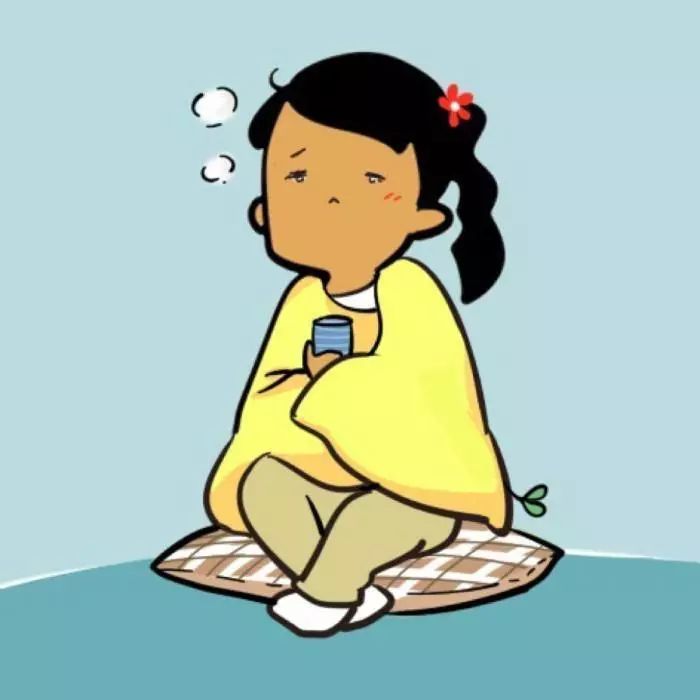

Common Cold
Overview:
The common cold is a common external pathogenic disease caused by the invasion of wind evil, leading to the invasion of the lung’s defensive qi and disharmony of the defensive layer. Clinical manifestations are characterized by nasal congestion, runny nose, sneezing, cough, headache, chills, fever, general malaise, and floating pulse.
This disease can occur in all four seasons, particularly more frequently in spring and winter. Mild cases are often due to the invasion of seasonal qi, referred to as wind-cold or wind-heat; severe cases are often due to the invasion of non-seasonal evils, termed heavy wind-cold. When a similar syndrome spreads widely within a certain period, it is called epidemic cold.
Etiology and Pathogenesis of Common Cold

The common cold is caused by the six excesses and seasonal epidemic toxins invading the lung’s defensive qi and skin, leading to the lung’s failure to disperse and the defensive layer’s disharmony.
Etiology
1. External invasion of the six excesses, with wind as the primary cause
Wind is the foremost of the six excesses, circulating through the four seasons; thus, external invasion often begins with wind.
Due to the seasonal predominance of the six qi, wind evil often combines with seasonal qi to harm the body, manifesting as different syndromes.
For example, in late autumn and winter, wind combines with cold, often resulting in wind-cold syndrome.
In spring and summer, when it is warm, wind combines with heat, commonly seen as wind-heat syndrome.
During the transition from summer to autumn, heat often combines with dampness, presenting as wind-heat with dampness syndrome.
However, wind-cold and wind-heat syndromes are the most common, followed by heat-damp syndrome. During the plum rain season, dampness can also be seen, as well as dryness in autumn.
2. Seasonal epidemic toxins
If seasonal epidemic toxins invade, the condition is often severe and variable, frequently leading to mutual transmission and widespread outbreaks, not limited to seasonal occurrences. As noted in the Sui Dynasty’s Chao Yuanfang’s “On the Sources of Various Diseases”: “Seasonal diseases arise from the disharmony of the seasons, where people are affected by erratic qi, leading to illness that easily spreads among individuals.”
Pathogenesis
The fundamental pathogenesis of the common cold is the invasion of the lung’s defensive qi and disharmony of the defensive layer.
External evils invade the lung’s defensive qi through two pathways: either entering through the mouth and nose or invading from the skin and hair. Wind is light and upward-moving, often affecting the upper jiao. The lungs are located in the chest, in the upper jiao, governing respiration, with the airways serving as the passage for inhalation and exhalation, the throat being its connection, and the nose being its opening, which combines with the skin and hair to serve as the body’s barrier. Therefore, when external evils invade through the mouth, nose, or skin, the lung’s defensive qi is the first to be affected, leading to disharmony of the defensive layer and symptoms related to the lung system in the upper jiao. Since the pathogenic evil is external and at the surface, disharmony of the defensive layer is the primary concern.
When the function of the defensive layer is weakened, external evils can invade and cause disease. Whether external evils can cause illness depends on the strength of the defensive qi and the severity of the invasion. If the righteous qi cannot overcome the evil, the evil can invade the defensive layer, leading to illness. Generally, the following situations can occur:
1. Rampant six excesses, and the body fails to adapt: Sudden climate changes, abnormal cold and heat, rampant six excess evils, and the defensive qi fails to regulate and adapt, leading to illness. If a seasonal virus is involved, it often causes widespread outbreaks.
2. Improper lifestyle leading to cold-heat imbalance: External evils invade due to improper clothing, exposure to cold, or excessive fatigue, leading to a failure of the pores to close and disharmony of the nutritive and defensive qi, resulting in the invasion of external evils.
3. Weak constitution, with internal and external factors triggering illness: A weak constitution with deficient righteous qi and an unstable defensive layer can easily lead to illness with slight exposure. For example, those with deficient yang are prone to wind-cold, while those with yin deficiency are susceptible to dryness and heat. Clinically, this is referred to as a deficiency-type common cold.
4. Pre-existing lung evils make one susceptible to new invasions: If the lung has pre-existing phlegm-heat or phlegm-dampness, and the lung’s defensive function is low, it is easy to be affected by external evils, leading to illness due to the interaction of internal and external factors. Clinically, one may see mixed symptoms of internal heat and external cold, and those with phlegm-dampness may exhibit symptoms of excess dampness. As noted in the Qing Dynasty’s Li Yongcui’s “Collection of Evidence and Treatment – Wind Cold”: “The lung often has phlegm-heat, and if it is bound by wind evil, internal fire cannot be released, leading to a condition called cold-warmth, which is a real syndrome caused by both internal and external factors. If the original qi is weak and the defensive layer is loose, even slight exposure can lead to wind symptoms; this is a deficiency syndrome caused by both internal and external factors.”
The pathological nature generally belongs to the exterior excess syndrome, but there are differences in cold and heat. This disease is caused by the invasion of external evils, with the disease location at the surface, thus belonging to the exterior excess syndrome. Due to the differences in seasonal qi and individual constitution, there are variations in cold and heat.
When affected by wind-cold-dampness, the skin and hair become obstructed, leading to stagnation of evil in the lungs, and the lung qi fails to disperse;
When affected by wind-heat-dryness, the skin and hair fail to disperse properly, leading to the invasion of evil heat into the lungs, and the lung fails to clear and regulate.
If affected by seasonal epidemic toxins, the condition may be severe, and there may even be transformations into other diseases. During the course of the illness, one may observe transformations or mixtures of cold and heat.
Key Points in Diagnosis of Common Cold

Diagnostic Criteria
1. Initial symptoms primarily involve the defensive layer and nasal-pharyngeal symptoms, including nasal congestion, runny nose, frequent sneezing, throat itching, throat pain, general body aches, aversion to wind or cold, or fever. Due to the tendency of wind evil to combine with heat, dampness, or dryness, related symptoms may also be present.
2. Seasonal colds often present as epidemics, with a sudden increase in the number of cases and similar symptoms, often starting abruptly with chills and fever (often high fever), general body aches, fatigue, and the condition is generally more severe than a common cold.
3. The course of the illness generally lasts 3 to 7 days. A common cold typically does not transform, while seasonal colds may occasionally transform into deeper conditions, leading to other diseases.
4. Can occur in all seasons, but is most common in winter and spring.
Differential Diagnosis
1. Common cold vs. wind-heat
This disease shares many early symptoms with various warm diseases, especially wind-heat colds, which are quite similar in the initial stages. However, wind-heat diseases progress rapidly, with chills and fever, even high fever; after sweating, the heat may temporarily subside, but the pulse remains rapid, and the body heat quickly returns, with cough and chest pain, severe headache, and even symptoms of confusion, convulsions, or delirium indicating transformation into deeper conditions.
Common cold fever is generally not high or absent, the condition is mild, does not transform, and after taking exterior-releasing herbs, sweating occurs, the pulse stabilizes, and the body cools, with a short course and good prognosis.
2. Common cold vs. seasonal cold
A common cold is milder, with less severe systemic symptoms and few transformations. The incidence may increase with climate changes, but lacks significant epidemic characteristics. If a cold persists for more than a week without improvement, with persistent fever or worsening symptoms, one should consider the possibility of the cold transforming into another disease.
Seasonal colds are more severe, with rapid onset, significant systemic symptoms, and the potential for transformation, leading to heat entering deeper levels, resulting in secondary or combined diseases, with widespread infectiousness and epidemic potential.
Disclaimer: Content sourced from “Internal Medicine of Traditional Chinese Medicine”
Editor: Bai Zhijun
Images: Network
Reviewed by: Chong Ge



Selected Past Articles
18 Apr 2019
-
Floating Needle Therapy for Lumbar and Leg Pain


